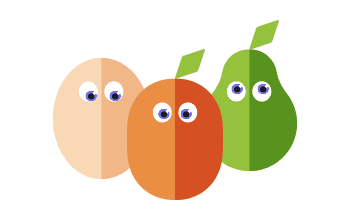As I'm sitting here trying to kill time until dinner (yes, I'm fasting and its not really going so well) I thought I'd post a recipe that caught my eye. Haven't been posting lately but I do check in most days.
So, here goes - looks long but is really very easy and I'm sure you could use Zero Noodles or Tofu Shirataki noodles.
While udon noodles typically sit in water or broth, here they're cooked in green tea. The herbal broth is fortified by the noodles as they simmer, and brightened with a touch of sweet mirin. This dish is easy as can be (if you can brew tea and boil noodles you're good to go) and a perfect canvas for endless variations. The recipe here contains yellow beans (added to the broth when the noodles were nearly finished cooking,) sliced leftover pork (decidedly not vegetarian,) crunchy lentil sprouts, chopped scallions and a final drizzle of toasted sesame oil.
Green Tea Broth with Udon Noodles
1/4 cup green tea leaves
Salt
8 ounces udon noodles
Freshly ground black pepper
1 tablespoon mirin or sugar (optional)
1. Put 7 cups water in a large pot with a tight-fitting lid and bring to a boil. Remove from the heat and let rest for a couple minutes. Stir in the tea leaves (or use a tea ball, cheesecloth, or some other mesh contraption), cover, and steep until fragrant and richly colored, 5 to 10 minutes. Strain the "tea broth" through a strainer and put the tea in a large saucepan. Discard the tea leaves.
2. Bring the tea broth to a boil and sprinkle with salt. Stir in the udon. When the broth returns to a boil, add 2 cups of cold water. When the liquid returns to a boil, turn the heat down so that it bubbles gently without overflowing. Cook, stirring occasionally, until the noodles are just tender, usually 5 to 7 minutes, but it could be more depending upon the brand you use. Taste and add more salt, a few grinds of pepper, and the mirin or sugar, if you like, and serve.
Additions to Green Tea Broth with Udon Noodles Some of these are garnishes to serve over the noodles; others are cooked in the broth to give it more character. And some can go either way:
•1 cup finely chopped tomato, added to the broth as it simmers
•a pinch or two of cayenne or other ground chile, added to the broth as it simmers
•1/2 cup cubed tofu, added to the broth when the noodles are nearly finished cooking
•1 cup precooked small beans, like soybeans, adzuki, edamame, or mung, added to the broth when the noodles are nearly finished cooking
•4 scrambled eggs, added to the broth when the noodles are nearly finished cooking
•1 tablespoon grated peeled fresh ginger, added to the broth as it simmers
•2 sheets nori, lightly toasted and cut into 1-inch strips, for garnish
•1 tablespoon white or black sesame seeds, used as a garnish
•1 teaspoon black mustard seeds for garnish
•2 tablespoons nuts, like pistachios, cashews, or hazelnuts, toasted and used as a garnish
•a dab of wasabi paste for garnish
•a thinly sliced onion, added to the broth as it simmers or as a garnish
•a handful of julienned cucumber, added to the broth as it simmers or as a garnish
•a cup or two of shredded lettuce or cabbage, added to the broth as it simmers or as a garnish
•1 cup mung bean sprouts, added to the broth as it simmers or used as a garnish
•2 tablespoons candied ginger (omit the mirin or sugar), added to the broth as it simmers or as a garnish
Have fun, experiment and enjoy - whether its a fast day or not.
So, here goes - looks long but is really very easy and I'm sure you could use Zero Noodles or Tofu Shirataki noodles.
While udon noodles typically sit in water or broth, here they're cooked in green tea. The herbal broth is fortified by the noodles as they simmer, and brightened with a touch of sweet mirin. This dish is easy as can be (if you can brew tea and boil noodles you're good to go) and a perfect canvas for endless variations. The recipe here contains yellow beans (added to the broth when the noodles were nearly finished cooking,) sliced leftover pork (decidedly not vegetarian,) crunchy lentil sprouts, chopped scallions and a final drizzle of toasted sesame oil.
Green Tea Broth with Udon Noodles
1/4 cup green tea leaves
Salt
8 ounces udon noodles
Freshly ground black pepper
1 tablespoon mirin or sugar (optional)
1. Put 7 cups water in a large pot with a tight-fitting lid and bring to a boil. Remove from the heat and let rest for a couple minutes. Stir in the tea leaves (or use a tea ball, cheesecloth, or some other mesh contraption), cover, and steep until fragrant and richly colored, 5 to 10 minutes. Strain the "tea broth" through a strainer and put the tea in a large saucepan. Discard the tea leaves.
2. Bring the tea broth to a boil and sprinkle with salt. Stir in the udon. When the broth returns to a boil, add 2 cups of cold water. When the liquid returns to a boil, turn the heat down so that it bubbles gently without overflowing. Cook, stirring occasionally, until the noodles are just tender, usually 5 to 7 minutes, but it could be more depending upon the brand you use. Taste and add more salt, a few grinds of pepper, and the mirin or sugar, if you like, and serve.
Additions to Green Tea Broth with Udon Noodles Some of these are garnishes to serve over the noodles; others are cooked in the broth to give it more character. And some can go either way:
•1 cup finely chopped tomato, added to the broth as it simmers
•a pinch or two of cayenne or other ground chile, added to the broth as it simmers
•1/2 cup cubed tofu, added to the broth when the noodles are nearly finished cooking
•1 cup precooked small beans, like soybeans, adzuki, edamame, or mung, added to the broth when the noodles are nearly finished cooking
•4 scrambled eggs, added to the broth when the noodles are nearly finished cooking
•1 tablespoon grated peeled fresh ginger, added to the broth as it simmers
•2 sheets nori, lightly toasted and cut into 1-inch strips, for garnish
•1 tablespoon white or black sesame seeds, used as a garnish
•1 teaspoon black mustard seeds for garnish
•2 tablespoons nuts, like pistachios, cashews, or hazelnuts, toasted and used as a garnish
•a dab of wasabi paste for garnish
•a thinly sliced onion, added to the broth as it simmers or as a garnish
•a handful of julienned cucumber, added to the broth as it simmers or as a garnish
•a cup or two of shredded lettuce or cabbage, added to the broth as it simmers or as a garnish
•1 cup mung bean sprouts, added to the broth as it simmers or used as a garnish
•2 tablespoons candied ginger (omit the mirin or sugar), added to the broth as it simmers or as a garnish
Have fun, experiment and enjoy - whether its a fast day or not.





